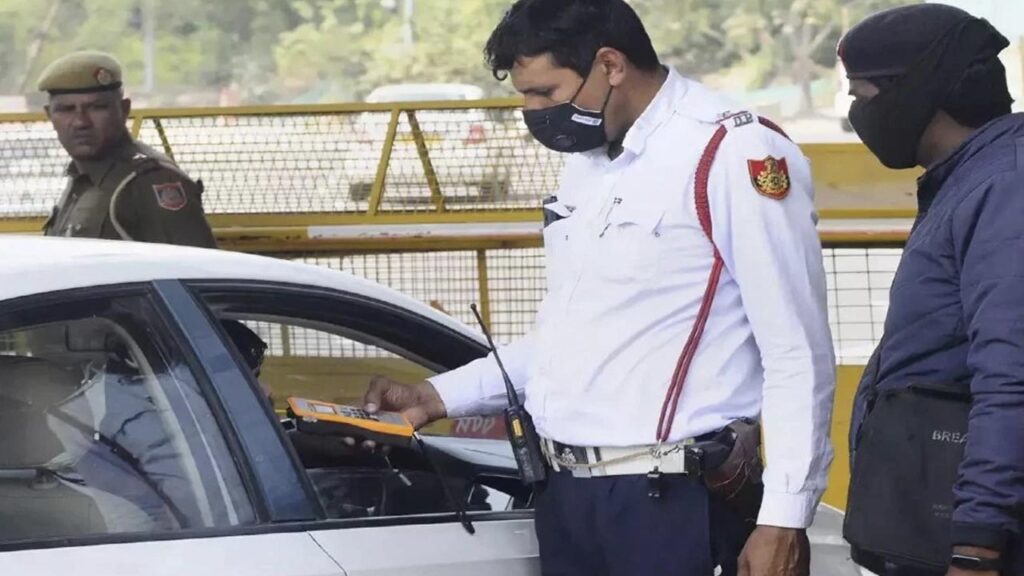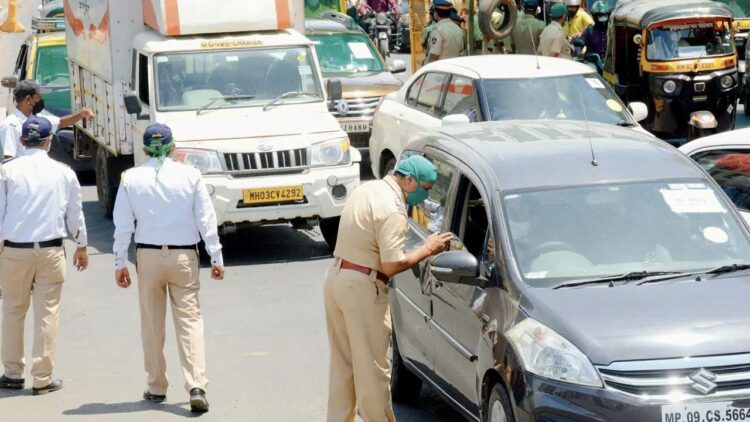As you traverse India’s streets, you may end up receiving an e-challans, the digital notifications of traffic violations. But what if you find yourself on the receiving end of an e-challan for an infraction you didn’t commit? This is exactly where an e-challan complaint come to your rescue. In this comprehensive guide, we will simplify the entire process for you. You will learn how to smoothly cancel traffic challans, understand the procedure for filing complaints against traffic police, and challenge challan errors by made by the authority. Rest assured, we are here to walk you through this journey, making e-challan disputes manageable and stress-free.
You may also like: How to Keep Rats and Rodents Away from Car in Just Rs 10?
What is an E-Challan Complaint?
An e-challan complaint is a formal way to raise a dispute for vehicle owners who feel they have been unjustly issued a traffic challan. So, if you get an e-challan through mail or SMS for an offence you didn’t commit, this complaint can help you get justice. E-challans are essentially tickets you receive virtually. However, when these virtual tickets erroneously point fingers at you, an e-challan complaint serves as your virtual voice. The process is designed to be straightforward and hassle-free. Just provide the necessary info, specify your grievance, and attach any available evidence. As traffic police makes a shift to digital practices, e-challans are commonplace. If an e-challan is issued by error, the e-challan complaint mechanism can help you rectify the situation.
Common Reasons for E-Challan Complaints
Here are some of the most frequent reasons why e-challans are sent wrongfully, thereby warranting the the filing of a complaint:
- Number Plate Mistakes: Errors, whether technological or human, can result in the incorrect capture of your vehicle’s registration plate. Consequently, you may receive an e-challan intended for another vehicle.
- Location and Time Errors: Cameras and data entry can make mistakes, leading to an e-challan citing a place and/or time where you weren’t present.
- Confusion in Vehicle Type: E-challans can be wrongfully provided due to confusion of vehicle type.
- Duplicate Challans: Technical issues can cause repetition of issuance of an e-challans for the same offence.
- Technical Glitches: Connectivity issues or camera inefficiency can result into wrongful e-challans.
- Data Entry Mistakes: Human errors at data entry point can lead to issuance of a wrongful e-challan.
- Stolen or Misused Vehicles: In case your vehicle is stole/misused, you might wrongfully get an e-challans
- Misinterpreted Violations: Sometimes, the violation is misunderstood, leading to a wrongful e-challan.
You may also like: How to Fix Car Glass Scratches at Home?
Step by step Process of Initiating an E-Challan Complaint
Handling erroneous traffic challans may seem perplexing, but rest assured, it can be simplified. In this section, we’ll elucidate the procedure for commencing an e-challan complaint, a streamlined and trouble-free process facilitated by the Ministry of Road Transport and Highways. Below are the steps that need to be undertaken to deal with the entire situation:
- Visit the Digital Traffic/Transport Enforcement Solution website for e-challans: Access it here.
- Locate the ‘Grievance System’ section on the website.
- If you don’t have an account, you can easily create one by choosing the “Create Account” option.
- Log in with your account and provide the requested details: These include your name, phone number, challan number, and a copy of your driving licence or registration certificate.
- Attach any proof that substantiates your claim if you have it.
- After filling in all the necessary details and attaching proof, click on ‘Submit’ to officially lodge the complaint.
- Next, you will get an email confirmation with the reference number for your complaint.

Here are some additional tips for initiating an e-challan complaint:
- Ensure accuracy when entering the challan details, as this expedites the processing of your complaint by the traffic police department.
- Explain clearly why you feel the e-challan is erroneous. Clearer the information that you give, easier it will be for traffic police department to investigate your case.
- Include supporting evidence with your complaint to bolster your case.
- Keep copies of the complaint form and any supporting evidence for future reference.
Required Information for Complaint Lodging
To increase your chances of success when filing an e-challan complaint, it’s crucial to have the right information at your fingertips. Here’s a breakdown of the
- Challan Number: This distinctive identification code is typically located on the e-challan itself, serving as a pivotal reference for authorities to pinpoint and scrutinize the specific challan under question.
- Vehicle Registration Number: Comparable to an identity card for your vehicle, the registration number plays a critical role in enabling authorities to correctly link the challan with the respective vehicle, ensuring precision in the proceedings.
- Date and Time of Alleged Violation: Precisely identifying the date and time of the alleged violation holds paramount importance. This data aids authorities in cross-referencing the purported violation with official records, guaranteeing alignment in all particulars.
- Location of Alleged Violation: Furnishing the exact location of the alleged violation serves to authenticate the complaint while affording authorities the opportunity to scrutinize the specific site for any potential disparities.
- Comprehensive Explanation of Challan Inaccuracy: Articulate with clarity the reasons behind your belief in the challan’s inaccuracy. Elaborate on the circumstances, discrepancies, or errors that have come to your attention.
- Supporting Photographs or Documents: A visual aid can be exceptionally persuasive. In this context, photographs or documents substantiating your claim can be compelling additions. Ensure their inclusion to substantially fortify your case.
- Witness Statements (if applicable): Should there be any witnesses to the incident, their statements can enhance the credibility of your complaint. Including their contact information and statements can be valuable supplementary material.
You may also like: Tips on How To Reverse Park Your Car – VIDEO
Legal Considerations in E-Challan Complaints
When addressing an e-challan complaint, it becomes imperative to give due regard to the legal dimensions to ensure a seamless and compliant procedure. The following are the pivotal legal aspects to bear in mind:
- Deadline Awareness: Each complaint carries a specific timeframe within which it must be lodged. Recognizing this timeline is critical, as traffic police departments often establish distinct windows for complaint submissions. Failure to adhere to this deadline might result in the dismissal of your complaint. This timeframe is instituted to guarantee the expeditious filing of complaints, and it is essential to honor this requirement.
- Factual Accuracy: Accuracy and truthfulness in providing information when submitting a complaint are of paramount importance. Falsifying details within your complaint can lead to confusion and may entail serious legal repercussions. Ensure that you present an accurate account of the facts, refraining from embellishments or false statements. Your complaint should offer an honest representation of the situation, thereby upholding fairness in the process.
- Clarity in Drafting the Complaint: When composing your complaint, maintain a professional and courteous tone. Articulate your concerns clearly and succinctly without resorting to inappropriate language. An approach characterized by professionalism underscores your commitment to amicably resolving the issue and reinforces the credibility of your complaint.
- Document Retention: Maintaining comprehensive records of all communications assumes a pivotal role in the complaint process. This encompasses the documentation of your complaint submission, any reference numbers furnished, and any responses received from the authorities. These records serve as invaluable evidence should disputes arise or subsequent actions be required.
- Supporting Evidence: In addition to these legal considerations, the presence of robust supporting evidence can substantially fortify your complaint. Attach photographs, videos, or pertinent documents that corroborate your assertions. This evidence can facilitate a more profound understanding of the situation by the authorities, expediting the resolution process.
What We Think
Contesting an e-challan that has been inaccurately issued is not solely a right but also a responsibility that falls upon every responsible vehicle owner. The advent of the digital revolution in India’s traffic management system has notably streamlined the complaint process, making it more user-friendly and efficient. By following the steps outlined in this manual and providing precise information and supporting evidence, you can significantly improve your chances of effectively challenging an erroneously issued traffic challan. It’s essential to keep in mind that remaining well-informed and proactive empowers you to protect your rights while navigating the roads.
You may also like: How to Safeguard Yourself from Landslides When Driving in Hills
FAQs:
A: Certainly, you have the option to dispute an e-challan through online means. This can be accomplished by going to the official website of your state’s traffic police department and completing a complaint form.
A: You can submit evidence to support your complaint by including photographs, documents, or any other relevant materials as attachments to the complaint form.
A: Once your complaint is submitted, the traffic police department will initiate an investigation and subsequently provide a resolution. If your complaint is validated, the e-challan in question will be nullified. However, if your complaint is declined, you have the option to file an appeal against the decision.
A: Certainly, in the event that your complaint is denied, you have the opportunity to initiate an appeal. To do so, it is necessary to file a written appeal with the traffic police department.
A: The duration required to address a complaint may fluctuate, contingent on the intricacy of the issue and the workload of the traffic police department. Nevertheless, it’s worth noting that the majority of complaints typically reach a resolution within a few weeks
You may also like: Radial Tyres vs Normal Tyres – Which Are Better for Your Motorcycle?


